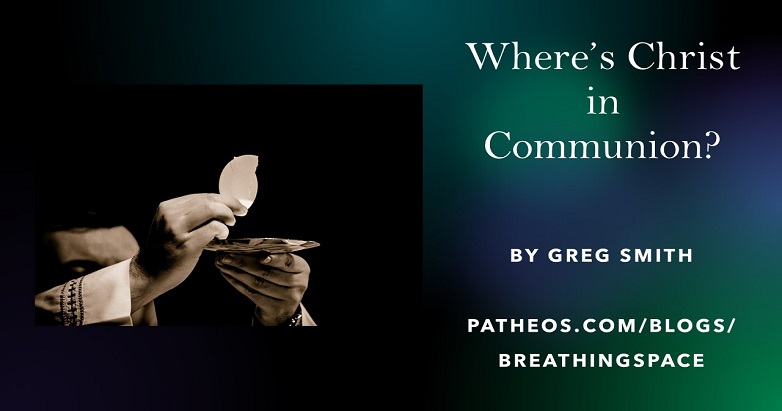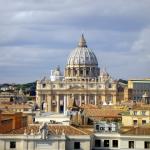If you’re questioning your faith, you may find it difficult to experience God in the Lord’s Supper. But Communion can be redeemed if you know its history and reimagine its meaning for yourself.

Guess Who’s Coming to Dinner
Ancient humans believed the deities needed sacrifice just as surely as people need to eat. They understood the gods as mystically consuming the sacrificial meat through fiery digestion. In the Bible, when Pagan worshipers offered human or animal sacrifices, they believed they were feeding the gods. Others knew that though celestial beings could not eat physical food, they were pleased and strengthened by the aroma of the offering.
Hebrew cultic worship suggested the same ideology. YHWH was pleased by the aroma of both incense and sacrificial smoke. Usually, worshipers kindled sacrificial fires themselves, but sometimes God miraculously burned offerings with fire from heaven. In 1 Kings 18, Elijah offered a sacrifice in a dramatic contest with the prophets of Baal. YHWH consumed the meat, firewood, and even anthropomorphically licked up the water from the trench around the offering. Clearly both prophets of both Baal and YHWH believed their deity capable of eating the sacrifice.
In the Hebrew scriptures, Abraham had the best story of a fellowship meal with God. In Genesis 18, three men visited Abraham. Theologians often interpret these as God plus two angels, or as the Trinity. The patriarch ordered a tender calf to be prepared and served to his guests, along with curds and milk. Though the Bible gives no indication of ritual slaughter, the calf was offered as a sacrifice to feed the visiting God. No one by Abraham can claim the honor of having eaten with God—prior to the Incarnation of Christ.
Body and Blood
Instead of feeding God, Jesus suggests that the faithful should feed on God. He reminds his followers of the manna God sent in the wilderness. In John 6.32b-33 NIV, he says:
“Very truly I tell you, it is not Moses who has given you the bread from heaven, but it is my Father who gives you the true bread from heaven. For the bread of God is the bread that comes down from heaven and gives life to the world.”
He says in verse 35b:
“I am the bread of life. Whoever comes to me will never go hungry, and whoever believes in me will never be thirsty.
Jesus turns his followers completely off when he tells them that his body is the main course of the sacrificial meal.
“Very truly I tell you, unless you eat the flesh of the Son of Man and drink his blood, you have no life in you. Whoever eats my flesh and drinks my blood has eternal life, and I will raise them up at the last day. For my flesh is real food and my blood is real drink. Whoever eats my flesh and drinks my blood remains in me, and I in them. Just as the living Father sent me and I live because of the Father, so the one who feeds on me will live because of me. This is the bread that came down from heaven. Your ancestors ate manna and died, but whoever feeds on this bread will live forever (John 6.53-58 NIV).”
Jesus later transforms his final Passover into a new kind of meal that he shares with his remaining disciples before his execution (Mt 26; Mk 14; Lk 22). As the fledgling church grows in the first century, agape meals are the central focus of fellowship gatherings. Over time, the Eucharist becomes a ritual practice eventually canonized as a sacrament or ordinance of the church.
Theology Schmeology
Theologians disagree on what happens to the eucharistic elements during Communion. Transubstantiation is the Roman Catholic doctrine that the bread and wine are transformed into the body and blood of Jesus. In this way, believers experience the real presence of Christ in the Lord’s Supper. Luther taught an alternate view, consubstantiation. This doctrine holds that the real presence of Christ is in and through the elements, without the need for a change in substance. Zwingli believed that the Eucharist is nothing more than a memorial meal, a symbolic remembrance of Jesus’ death. But all this theology loses people who just want to experience God.
Jesus lost his audience with all his talk of cannibalism. Theologians lose theirs with their arguments over elements. Christians who are questioning their faith often find it difficult to experience God in Communion, when they have a hard time buying all these mystical doctrines. But Jesus himself presents the solution.
Christ in You, the Hope of Communion
Jesus shows that all three of these theological views miss the point. When we share Communion, we do experience the real presence of Christ—but not in the way that many think. Bread and wine do not make a Eucharist, and we’re missing something if we believe those molecules contain Christ. The real presence of Jesus is in and around and through the believers who share the fellowship meal. Repeatedly, Jesus emphasizes his presence in people. What we do to them, we do to him. When we share a meal with God’s people, we share that meal with God.
When our concept of Eucharist extends beyond the church, compassion becomes Communion. As you give a granola bar to a person who is homeless, you break the bread of Christ. A glass of wine with friends at dinner becomes sacramental when you realize the presence of God in them. The real presence of Christ was never in bread and juice anyway—it’s always been in the love we share. Because love for others is love for God.
For people who struggle with faith, The Lord’s Supper can be a challenge. Many churches and denominations forbid you from participating unless you believe (or believe just as they do.) They insist you accept their interpretation of the significance of the Eucharist. As you deconstruct what you do and don’t believe, I suggest this alternate view of Communion. It may help you to transform a sacrificial meal into fellowship with the Holy that resides in your neighbor. Because this is what Jesus was doing when he shared a last meal with his friends.












